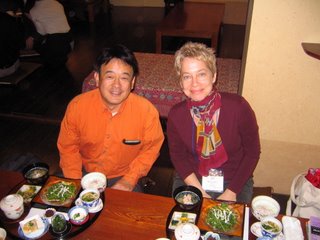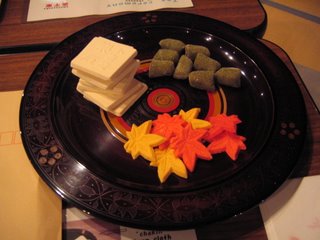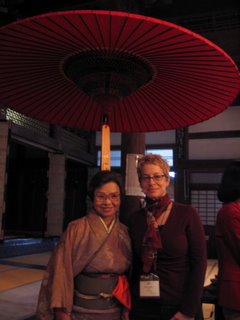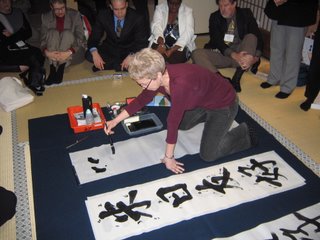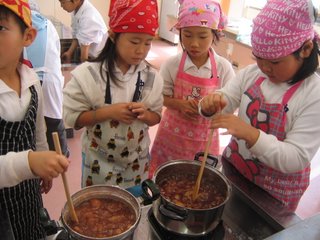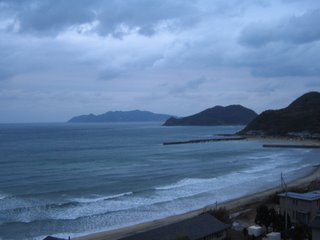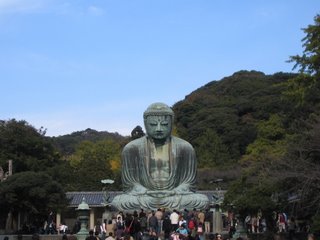Today was my first, and only, free day to explore Japan on my own. Before coming to Tokyo I had very fortunately learned of a service that is available in Japan, known as "Good Will Guides". I had somehow come across this on the internet when I was searching for information on Japan. Basically, a Good Will Guide is usually a University student, or even sometimes a Japanese housewife, who acts as a tour guide in order to have an opportunity to practice speaking English. They don't charge a fee; you just pay their transportation and meal costs. I contacted an organization, run out of Tokyo Institute of Technology and arranged for a guide to take me to Kamakura, which is about an hour south of Tokyo. I 'met' Katsura, my guide through email before I left New York and today I finally met her in person. Right away, I knew she would be great company for the day. She is 21 years old and spoke really good English and she helped me with my Japanese. Of course she kept apologizing for how bad her English was, but then I kept apologizing for how bad my Japanese is, so we were even.
We took the train to Kamakura and when we got off the train we walked a bit on Komachi Dori, which is a great street with all kinds of little interesting shops: bakeries, washi (paper) shops, shops that sell food made from red beans, shops that sell food made from black beans, or sweet potato, or chestnuts, wagashi (sweet) shops, textile shops...you name it, Komachi Dori has it, only you have to understand everything, yes everything, is absolutely and exquisitely presented. The Japanese sense for aesthetics is visible in everything you see. Packages are beautifully wrapped and displayed, it is like visual poetry viewing the stores as you walk down the street. I bought all kinds of unique items made from fabrics, paper, and I even found an antique figure of Ebisu-san, who is the god of wealth. He is very tiny, and he is holding a fishing pole in one hand and fish in the other. If you can fish, you have wealth because you will never be hungry. You will always be ippai (full). Nice, huh?
But the real reason I wanted to go to Kamakura was to see Daibutsu, the giant Buddha who stands more than 30 feet tall. After walking down Komachi Dori we took a bus to the shrine where Daibutsu sits. When He was first made He was housed in a wooden shrine, which burned down around two hundred years ago, so now Buddha sits quietly, His patina getting darker and darker with age. Upon approaching the shrine, as with all shrines in Japan, there is a special fountain where you wash your hands and rinse your mouth with the water to be purified. You scoop the water onto your left hand first, then your right hand. Then you pour a little water into your left hand, drink the water, and spit it out. I know this is not something Americans are used to and some may see it as being unsanitary, but it's not, because you don't touch the ladle, and then you spit the water into a seperate area, kind of like a mote, away from the fountain. After the water purification we approached the Buddha, and it was really quite spectacular. He is huge and somewhat daunting, yet peaceful. Circling overhead were giant birds, must have been hawks or falcons, and it gave the whole scene a feeling of being transported back a few centuries, despite the crowds there to view Him. We walked the grounds, viewed the altars, and then went and had lunch in a traditional Japanese restaurant. The food that was presented was like edible sculpture. It was like no meal I have ever had anywhere else. Every aspect of the presentation was like a miniature sculpture exhibition and each bite I put in my mouth was as if I were eating a work of art that tasted sublime.















